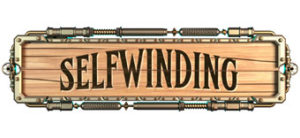
Photo by Blake Weyland on Unsplash
The main difference between finishing a project and not is often confidence. The confidence we feel about our creative work is what keeps us going through the hiccups, the rough days, and the multiple revisions. It helps us make choices, stick with them, and show our work to other people. Confidence in our creativity is what gets us to write in the first place—and what sees us through to the end.
Friends, let me tell you, this month my creative confidence has been shaky.
It’s no great secret I’m a planner by nature. (Have you been around here for ten seconds? I talk about it constantly and probably have it documented in a spreadsheet.) I leave space in all my writing plans for some serendipitous pantsing—a connection or worldbuilding detail that blooms as I draft and will be folded in to enhance what’s already planned—but by and large, I draft an outline, I set a scene list, and I follow that basic structure.
The reason I follow that structure is not because that’s the way I should write, it’s because, largely, it’s a solid structure! I know what I’m doing when I plan out a story. I’ve internalized story structure through all my watching and reading and studying, so that when I record my plan and step through the story, everything makes sense and builds to satisfying climaxes and resolved character arcs. When I start rearranging the furniture as I draft, it becomes very obvious why I arranged the events in this order in the first place.
It’s been frustrating this month when my brain just hasn’t wanted to write the scene that way. When I get stuck in a moment and can’t find my way out without inventing a new twist or direction in the plot. When I think the timeline is both too long and too short because (wait for it)… I lost my creative confidence.
The problem isn’t that my story plan was wrong or weak or lacking in any way. My problem is that I’m having difficulty in other areas of my life and it’s shaking my confidence. Since writing comes from our emotions and current headspace, mental health is key to a writer’s ability to write. When stress, anxiety, or depression affects us, it can stop us in our tracks in huge ways unless we can find some way to maintain our creative confidence.
I’m regaining it in fits and spurts—and I’m almost through this chapter that’s been plaguing me—but creative confidence is an ongoing struggle. If you’ve been struggling with your confidence, I hope you can find some solace in knowing you’re not the only one and I hope you find your confidence again soon.
For full access to The Write Life and more about what I did to restore my creative confidence, sign up on Patreon for $1 or more per month. You’ll also receive a personalized thank you in a future edition of The Write Life.









